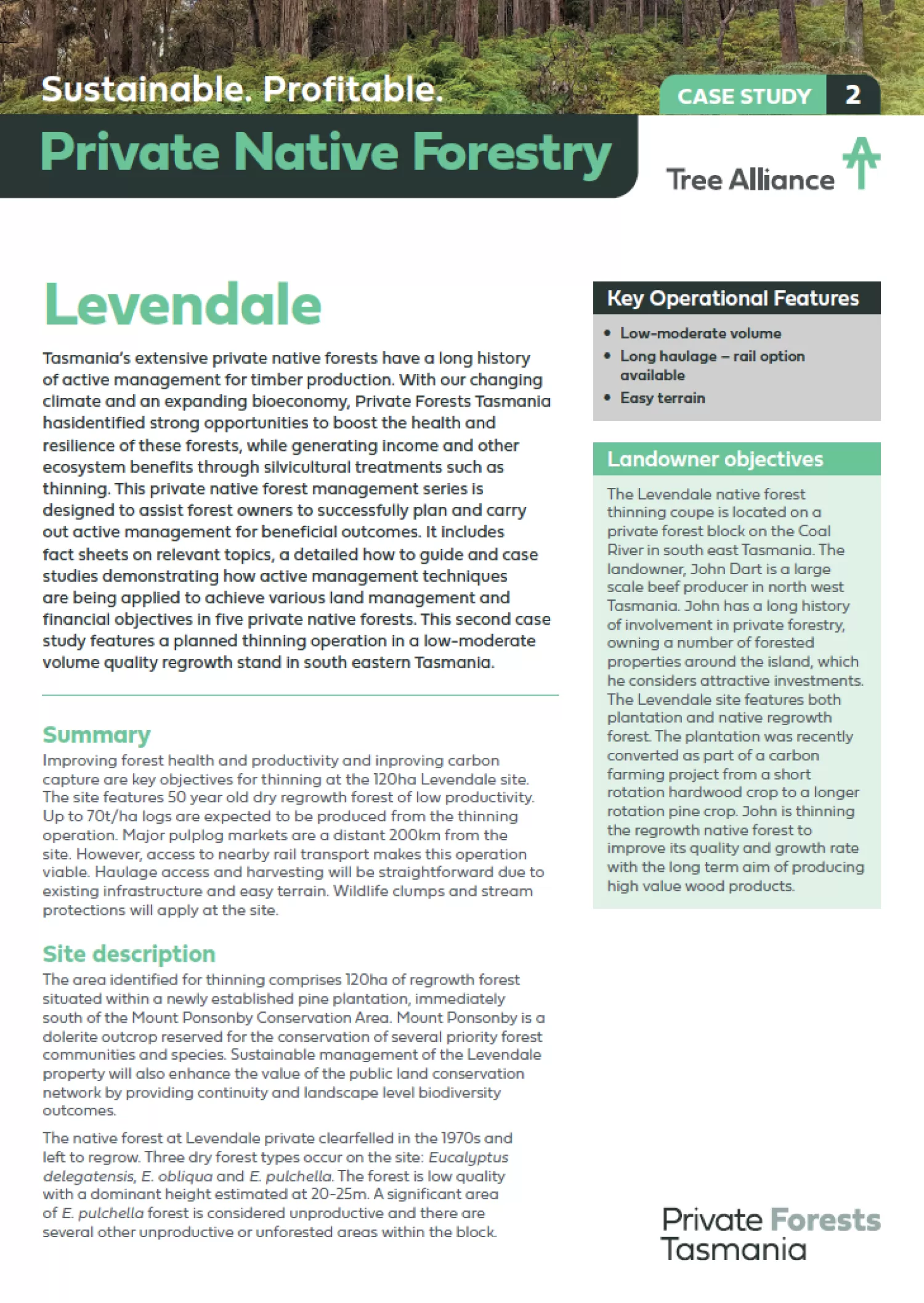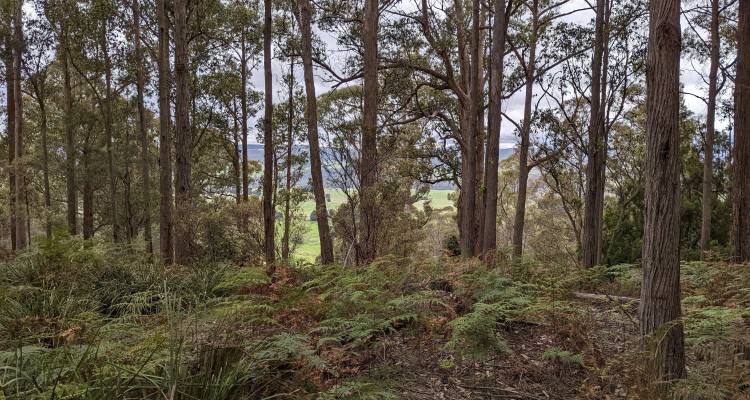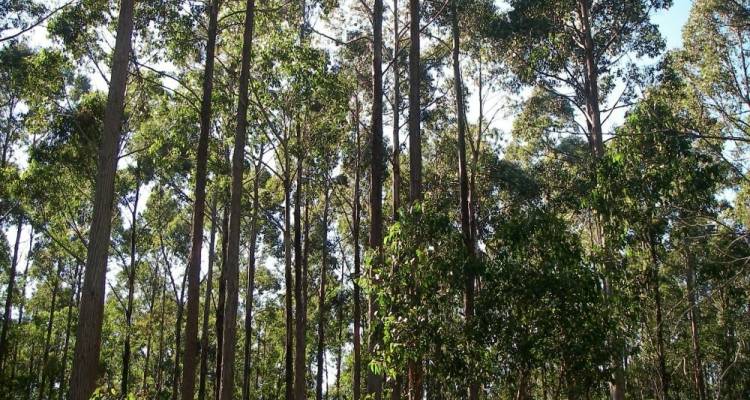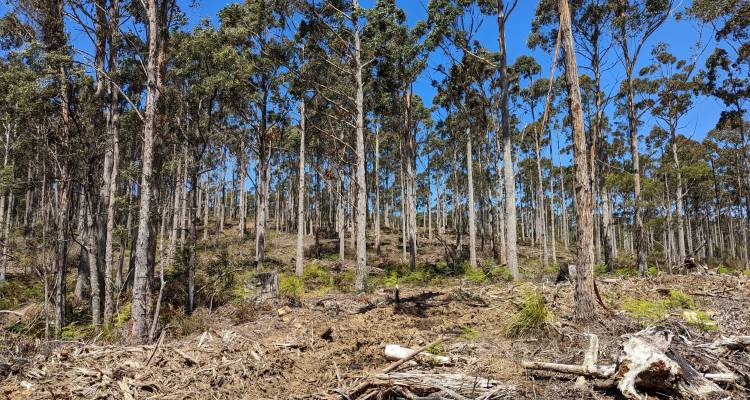Case studies
Five native regrowth forest case studies representing different forest types, species and sites
Private native regrowth forestry case studies
Private native regrowth forestry case studies have been developed for five properties in a range of locations across northern and south-east Tasmania. The five properties represent different forest types and species, as well as site quality. They also showcase a full range of potential market options and supply chain challenges. Importantly, the primary forest management objectives for each of the five properties, which provides you, as a landowner, with a range of scenarios to compare with your own situation.
The harvesting operations at each of the properties involve selective harvesting, in the form of thinning to undertake a profitable operation which will create a multi-aged forest, increase medium-term sawlog production and result in improved forest health and broader environmental benefits, including understorey development for biodiversity, as well as carbon sequestration. The planned result is a healthy, biodiverse, productive, multi-aged forest that can be managed on an ongoing basis to generate regular profit for the landowner and contribute to a healthier environment.
The five properties are throughout Tasmania, as shown in the map.

Case Study 1 - Private Native Forestry - Sassafras
The Sassafras native regrowth forest thinning coupe is located on the Bass Highway south of Sassafras. The landowners, Dallas and Scott Rockliffe run a mixed farming enterprise, growing vegetables and cattle on their property adjacent to the forest. They have a long-term vision to actively manage their forest for ongoing high value timber production. This current operation will improve the health and quality of the forest for future sawlog production while generating immediate income from thinings.

Case Study 2 - Private Native Forestry - Levendale
The Levendale native regrowth forest thinning coupe is located on a private forest block on the Coal River in southeast Tasmania. The landowner, John Dart is a large-scale beef producer in the northwest. John has a long history of involvement in private forestry owning a number of forested properties around the island which he considers attractive investments.
The Levendale site features both plantation and native regrowth forest. The plantation was recently converted as part of a carbon farming project from a short rotation hardwood crop to a longer rotation pine crop. John is thinning the native regrowth forest to improve its quality and growth rate with the long-term aim of producing high value wood products.

Case Study 3 - Private Native Forestry - Mount Direction
The Mount Direction native regrowth forest thinning coupe is located at Lower Turners Marsh north of Launceston.
The site has two distinct section of forest, 17 hectares of degraded forest within the house block and an 80-hectare forest block, both of which will be thinned.
The landowner, Angela Frankcombe wants to return her forest to a healthy condition and reduce fire risk by thinning the regrowth and removing the dead dry stems for firewood.
Once cleaned up, Angela intends to sell the house block and will keep the forest block in the longer term.

Case Study 4 - Private Native Forestry - Ben Nevis
The Ben Nevis native regrowth forest thinning coupe is located on the North Esk River, 35km east of Launceston. The site is part of a larger plantation forestry property purchased in recent years by Stephen Creese. Stephen is one of the largest potato growers in northeast Tasmania, and also manages a number of grazing properties for international investors as well as being actively engaged in forestry.
Since acquiring this property, Stephen has converted around 200 hectares of former hardwood plantation to pine for a carbon project and intends to revert the remainder of the former plantation area to pasture. Production of veneer and sawlogs is the long-term management objective for the native regrowth forest.
The thinning operation aims to generate immediate income and improve the future productivity and quality of the forest.

Case Study 5 - Private Native Forestry - Blackwood Creek
The Blackwood Creek native regrowth forest thinning coupe is owned by an active proponent of private forestry in Tasmania. Located 25km southwest of Longford, the 750-hectare property is a mixed family faming and forestry enterprise. The owner, John Lord, is focussed on balanced, long-term environmental, social and economic outcomes from the forest.
The forest has been managed for multiple uses including timber production for many decades. A selective harvesting strategy is being used to develop a multi-aged forest structure and generate timber to feed the growing bio-economy. Income from harvesting provides useful periodic returns that are used to pay for educational and other major family farm expenses. Mechanical disturbance from the harvesting helps to manage forest fuels and reduce bushfire and associated environmental risks. The forestry enterprise benefits the community by providing employment and access for recreational activities such as horse riding, walking and mountain biking.

Phone our free helpline on 1300 661 009 to speak with a Private Forester or email us at admin@pft.tas.gov.au



